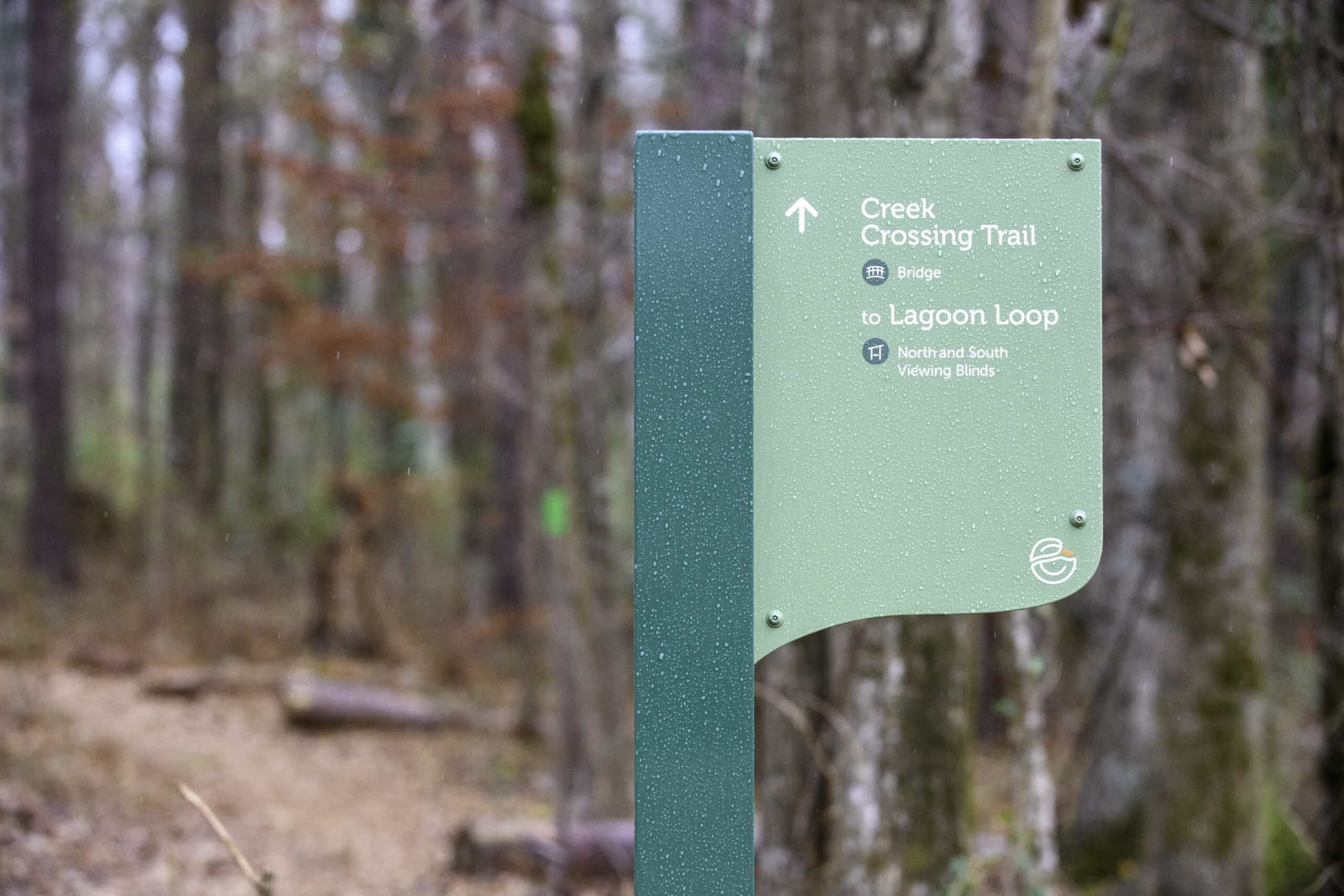Contributed by Opelika Parks and Recreation
On Friday, the Friends of the Wood Duck Nature Preserve and the Alabama Watershed Stewards program installed a Rain Garden near the pavilion at the Wood Duck Nature Preserve. Rain gardens are shallow depressions in the landscape, planted with native plants that are designed to help capture stormwater runoff from parking lots and rooftops to better slow down stormwater and filter out pollutants. The rain garden at WDNP will help address storm water coming from the parking lot and pavilion roof top.
Although rain gardens take a few years to fully establish like most landscape features, the native plants used in rain gardens can also provide valuable habitat for pollinators while being an aesthetic landscape feature.
Rain Gardens are considered part of Green Infrastructure and Low Impact Development initiatives in urban areas; if multiple rain gardens (and other green infrastructure practices) are spread out across a city, they can play a larger role in preventing polluted water runoff from entering rivers and streams. Watershed Stewards, the AU Water Resource Center, and Friends of the Wood Duck Nature Center all partnered together on this project. As Opelika continues to demonstrate its commitment to protecting natural resources, the Friends of WDNP and Alabama Watershed Stewards hope that his project will serve as a demonstration project for similar future projects.
The rain garden installation was part of a statewide educational program, Alabama Watershed Stewards (AWS), housed under the Auburn University Water Resource Center. The program was developed for the general public to help people better understand watershed management and how to improve water quality. The AWS program increases awareness about non-point source pollution throughout the state by hosting educational trainings, workshops, and hands-on projects like this one. Alabama Watershed Stewards and the rain garden supplies are funded by the Alabama Department of Environmental Management’s Non-point Source Unit through a Clean Water Act 319(h) grant, and implemented through the Auburn Water Resource Center’s ACES Water Program.

